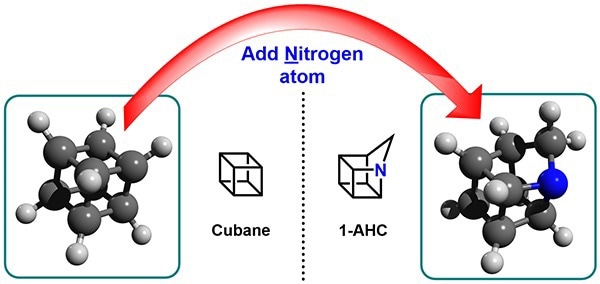Uncovering a platform for chemical synthesis based on cubic molecules is part of an ongoing discovery program that could help rejuvenate old drugs and agrochemicals.

Image Credit: University of Queensland
Professor Craig Williams of the University of Queensland stated that the platform, developed in partnership with CSIRO, is creating an interesting set of tools for chemists who, in many cases, have been running out of new chemical building block alternatives.
Chemists have often relied on hydrocarbons, substances like petrochemicals, throughout history to build new critically important chemicals for society. But one key hydrocarbon that’s been historically missing from this mix is cubane—a synthetic hydrocarbon in the shape of a cube.
Craig Williams, School of Chemistry and Molecular Biosciences, Faculty of Science, University of Queensland
He added, “Cubane traditionally was overlooked, as there was no way to synthesize this molecule on a large scale and so its application was limited. This has since changed as Australian chemists at CSIRO reported a kilogram scale synthesis, which is now in production at Boron Molecular in Melbourne, that enabled a significant upsurge of cubane research in the twenty-first century.”
The UQ team successfully added a nitrogen atom for the first time to a near relative of cubane, which could eventually enhance the characteristics of this class of molecules for usage in biological systems.
Williams further stated, “Hydrocarbons find success within a wide selection of drugs, but the nature of an all-carbon atom core can impede some biological interactions and restrict their application in drug and agrochemical discovery. Elements like nitrogen can facilitate biologically desirable interactions that are unavailable to hydrocarbons.”
“In fact, the biological demand for nitrogen is so great that most US FDA-approved drugs contain at least one nitrogen atom. Substituting nitrogen atoms into pharmaceutically proven hydrocarbon scaffolds, like cubane, is an underutilized but attractive strategy to upgrade their biological potential. The synthesis and study of 1-azahomocubane in collaboration with the University of Chicago and Queensland University of Technology pushes the boundary of what is possible,” added Williams.
Dr. Paul Savage, Deputy Director of CSIRO Manufacturing, and Professor Williams have a long-standing collaboration. Dr. Savage’s team has expertise in transforming lab innovations into scalable processes.
According to Dr. Savage, the study team is eager to see what comes next.
This groundwork may lead to better treatments for disease, or day-to-day chemicals that vastly improve our quality of life and the environment. To be clear, these are all future aspirations—and could be a long way off—but this work is fundamental to providing new options to chemists around the globe, and we are thrilled to have been able to make a contribution towards this goal.
Dr. Paul Savage, Deputy Director, CSIRO Manufacturing
Chemistry World and Science-In the Pipeline have both featured the research.